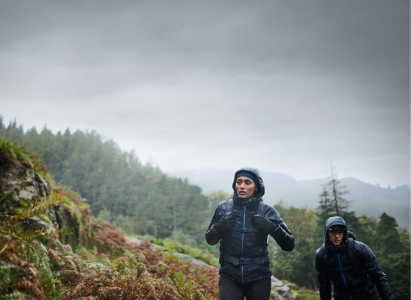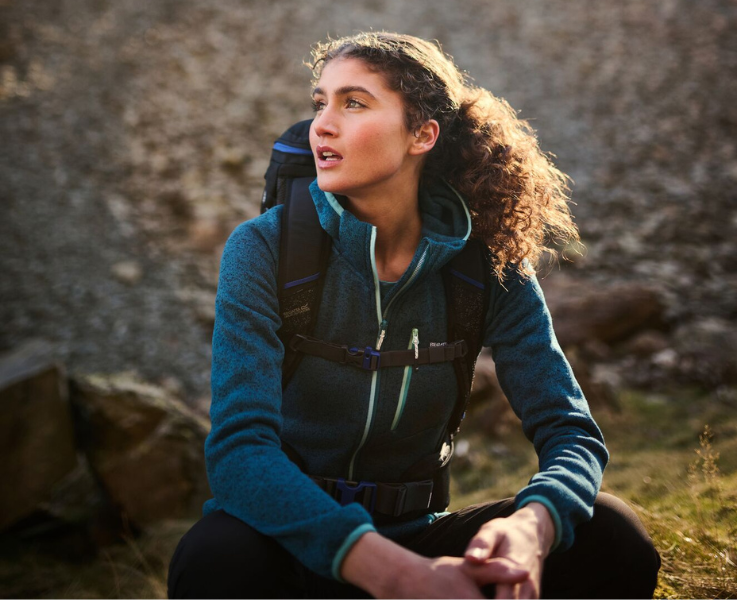
Hiking Essentials: What To Bring On Your Hike
Nothing beats the rewarding feel of completing a challenging hike. It's an excellent stress reliever and you'll be able to take in some of the most incredible landscapes along the way. However, the key to a safe, comfortable and enjoyable hike is preparation. You need to dress for the elements and be ready for the unexpected, so you'll need to be wary on what type of footwear you bring, as well as making sure you've got a good level of rain protection.
Prepare for your next adventure with our helpful list of hiking essentials to ensure that you’re covered for a wide range of different situations. So, whether it’s unseasonably hot or you’re caught in an unexpected rain shower, you won't get caught out and you’ll still have a great time.
Hiking Clothing

Waterproof Jacket
The waterproof jacket is one of the cornerstones of outdoor clothing. They’re a great all-rounder that’ll keep you warm, protected from the wind and serve as a barrier against the rain. Make sure to check that your jacket is waterproof and not just water resistant, as a fully waterproof jacket will be more effective at keeping water out. Your rain jacket should be breathable, roomy and have lots of accessible pockets.
Fleece
An insulating mid layer such as a fleece can be worn either as an outer layer on a mild day or underneath your waterproof jacket for some extra warmth if it’s cold. Plus, the cosy lining of a fleece is always a welcome feeling, setting you up for a comfortable, enjoyable hike. Have a read of our layering guide to learn more about the outdoor clothing layering system.
Walking Trousers
Since your legs will be moving an awful lot throughout your hike, it’s important to have a comfy pair of trousers to do the job. Walking trousers will help limit things like chafing, as well as providing some degree of weather protection from the wind and rain.
Select pairs in our own collection of walking trousers are warm-backed, which helps keep your legs nice and cosy when facing the winter elements. Waterproof walking trousers are even better if you know you’re going to be hiking in the rain. For summer hikes in hot weather, swapping trousers for cargo shorts or walking shorts can help you stay cooler, while the multiple pockets ensure you can still carry essential items conveniently.
Hiking Footwear
Walking Boots
It’s always useful to bring a good pair of hiking boots that suit the walk you’ll be taking on – for example, thick mud, rocky terrain or steep mountain paths. Plenty of Regatta walking boots also offer waterproof protection, which will help keep your feet nice and dry.
Walking Shoes
If you’re going to be travelling along natural trails and footpaths, walking shoes will do you just fine and will keep you quicker on your feet. Just like our range of walking boots, lots of Regatta walking shoes are waterproof, so you’ll be able to step through puddles without worry.
Which Is Best?
Opt for walking shoes for speedier, more natural walking on normal terrains, and walking boots for difficult, mountainous, rocky or snowy terrain. If you’re unsure what you’ll be facing on the walk, we’d recommend going for the heavier-duty option just in case, but it’s also worth having a read of our walking boots vs walking shoes comparison guide.
Regardless, choose lightweight footwear that is waterproof, breathable and that suits your walking style.

Must-Have Gear for Hiking
It’s advisable to have all of the above before tackling any serious hike, but some pieces of kit are more important than others. Unless you’re unlucky enough to face an emergency, you’ll probably have a perfectly good hike. Below, we’ve put together a quick list of hiking essentials so that you don’t forget to pack the forgettable stuff in your rucksack, such as a mini torch or a spare power pack for charging your phone.
What to Take on a Hike
- A warm hat and gloves (for colder conditions).
- A Portable Battery Pack – allowing you to charge your smartphone on the go.
- Insulating and breathable layers – these allow you to layer up or down if the weather conditions change, so you’ll never be too hot or too cold.
- Sunscreen and sunglasses – remember that you can still get burnt or find the sun’s glare too bright on overcast days or in snowy conditions.
- A fully charged mobile phone, plus a spare power pack and charging cable – this will be essential if you need GPS map directions or to call for help.
- First aid kit – containing at least plasters, bandages, painkillers and any medication you require, just in case of an emergency.
- Large bottle of water and some high energy snacks.
- A spare pair of hiking socks in case the ones you’re wearing get wet, as walking in wet socks can be an extremely unpleasant experience and lead to hiking blisters.
- A torch and whistle – for attracting attention if you get lost, or for finding your way if it gets dark before you finish your walk.
- A microfibre towel to keep dry as you eventually work up a sweat.
- A pair of Walking poles. They aren’t for everyone, but some hikers prefer using poles as they help to support your weight, give you more confidence on uneven ground and take the pressure off your knees. If you’ve never used walking poles before, you can learn more here.
What Food to Bring On a Long Hike
Last but not least, you need to ensure you’ll have enough energy on your walk. Packing snacks rather than full meals is recommended, so you can top up your energy levels at regular intervals and keep hunger at bay.
High energy, nutritious snacks such as flapjacks are ideal, as they’re light to carry and are packed with slow-release carbohydrates. Other good options include energy bars or gels, granola bars, fresh whole fruit (such as bananas, oranges or apples that don’t need to be kept cold), nuts and seeds. Hydration is absolutely essential on any hike. A full water bottle may feel heavy in your rucksack, but you’ll definitely need it. Besides, the bottle will gradually get lighter as you drink the water throughout your hike.
